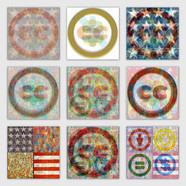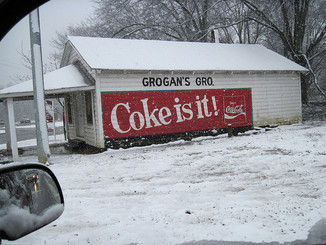CC image courtesy of qthomasbower on Flickr
Being from an artistic family, and hearing beautiful music they have written, has made me very aware of the rights to creative works. As with music, any creative work is covered under copyright law and provides licensing for ‘All Rights Reserved’. With the availability of the web, many people want to share their creations with the world. Creative Commons is an organization that provides tools that allows uploading and sharing of creative works. As Richardson states, those sharing resources can “indicate what types of uses they will allow” and ask for attribution of their work (p. 105). Many sites now carry the CC logo which grants creative commons licensing to the resources on their site as specified. In all honesty, I have noticed very few sites with the Creative Commons icon. However, I must confess, I thought the icon meant the sites provided closed captions. Now recognizing the icon and rights it carries will be one of the first things I look for as I look at sites to gather resources.
In searching for creative works for projects, students will be able to search by keyword and works that have been tagged with that keyword will populate. Students can gather more information from annotations made on images on sites like Flickr. They can take a journey from a image through geotagging and jump to Google Earth and find the location where the picture was taken. Student learning can be greatly impacted through authentic learning experiences by introducing “social conversations and collaborative learning opportunities” through sites that give access to creative commons resources (p. 110). Through searches, students may come across an annotated picture that provides information that can prompt further investigation. By including these resources, students can be enticed to think more deeply and critically. It is also important for students to learn about digital citizenship and the process of finding ‘Some Rights Reserved’ versus ‘All Rights Reserved’ creative works. The experience gained from finding Creative Common works could help prevent legal issues later in life from sharing or modifying works that violate copyright.
In my work as an Instructional Technology coach I am constantly looking for resources, pictures and videos, music for training material, as well as works for student projects. I try to look for copyright free materials through sites like Pixabay and Google Images. I share most of my training materials on the web so participants can access them after my training sessions. I will be more observant to include citations for all creative works I share in the future. I own my teaching materials as covered by standard copyright law. However, it will be important to correctly tag anything I share through Creative Commons so others can find my resources and have rights to use them. One negative item, inappropriate images or videos can be tagged incorrectly and found from an innocent search. Therefore teachers need to use these sites and become familiar with their functionality, as well as talk with their students about possible risks and appropriate use (p. 102).
CC image courtesy of hmaddox on Flickr
Flickr is a great resource for the classroom. Pictures and videos are searchable by keyword and the advanced search option provides the option of filtering for Creative Commons images. In the picture that I uploaded above in 2010 I included the name of the store in the description. The store is a landmark and is now being torn down. Anyone in the future reminiscing about Grogan’s Store will be able to search and find my picture on Flickr. Using Flickr in the classroom will allow teachers or students to type in search criteria and select only Creative Commons works to find pictures that they can use for projects. Teachers can easily find pictures on periods in history like the great depression and instantly create a slideshow. Imagine a teacher projecting a slideshow of these images and reading aloud John Steinbeck’s Of Mice and Men. Great ideas for using Flickr can be found on the Classroom Uses of Flickr website, my favorite is geotagging images with latitude and longitude coordinates and combining with Google Earth. Google Images also allows searching for images and selecting usage rights that are tagged labeled for reuse. Both Flickr and Google Images websites provide a wealth of images and videos to use for digital projects and presentations.
I will use the Google slideshow below when conducting sessions on Digital Storytelling and how to find creative works to use in projects.
Flickr is a great resource for the classroom. Pictures and videos are searchable by keyword and the advanced search option provides the option of filtering for Creative Commons images. In the picture that I uploaded above in 2010 I included the name of the store in the description. The store is a landmark and is now being torn down. Anyone in the future reminiscing about Grogan’s Store will be able to search and find my picture on Flickr. Using Flickr in the classroom will allow teachers or students to type in search criteria and select only Creative Commons works to find pictures that they can use for projects. Teachers can easily find pictures on periods in history like the great depression and instantly create a slideshow. Imagine a teacher projecting a slideshow of these images and reading aloud John Steinbeck’s Of Mice and Men. Great ideas for using Flickr can be found on the Classroom Uses of Flickr website, my favorite is geotagging images with latitude and longitude coordinates and combining with Google Earth. Google Images also allows searching for images and selecting usage rights that are tagged labeled for reuse. Both Flickr and Google Images websites provide a wealth of images and videos to use for digital projects and presentations.
I will use the Google slideshow below when conducting sessions on Digital Storytelling and how to find creative works to use in projects.
Richardson, W. (2010). Blogs, wikis, podcasts, and other powerful web
tools for classrooms. (3rd ed.). Thousand Oak, California: Corwin.


